Based on epidemiologic and embryologic patterns, nonsyndromic orofacial
clefts- the most common craniofacial birth defects in humans- are commonly
categorized into cleft lip with or without cleft palate (CL/P) and cleft
palate alone (CP), which are traditionally considered to be etiologically
distinct. 然而, some evidence of shared genetic risk in IRF6, GRHL3 and
ARHGAP29 regions exists; only FOXE1 has been recognized as significantly
associated with both CL/P and CP in genome-wide association studies (GWAS).
We used a new statistical approach, PLACO (pleiotropic analysis under
composite null), on a combined multi-ethnic GWAS of 2,771 CL/P and 611 CP
case-parent trios. At the genome-wide significance threshold of 5 × 10-8,
PLACO identified 1 locus in 1q32.2 (IRF6) that appears to increase risk for
one OFC subgroup but decrease risk for the other. At a suggestive
significance threshold of 10-6, we found 5 more loci with compelling
candidate genes having opposite effects on CL/P and CP: 1p36.13 (PAX7),
3q29 (DLG1), 4p13 (LIMCH1), 4q21.1 (SHROOM3) and 17q22 (NOG). 此外,
we replicated the recognized shared locus 9q22.33 (FOXE1), and identified 2
loci in 19p13.12 (RAB8A) and 20q12 (MAFB) that appear to influence risk of
both CL/P and CP in the same direction. We found locus-specific effects may
vary by racial/ethnic group at these regions of genetic overlap, and failed
to find evidence of sex-specific differences. We confirmed shared etiology
of the two OFC subtypes comprising CL/P, and additionally found suggestive
evidence of differences in their pathogenesis at 2 loci of genetic overlap.
Our novel findings include 6 new loci of genetic overlap between CL/P and
CP; 3 new loci between pairwise OFC subtypes; 和 4 loci not previously
implicated in OFCs. Our in-silico validation showed PLACO is robust to
subtype-specific effects, and can achieve massive power gains over existing
approaches for identifying genetic overlap between disease subtypes. 在
summary, we found suggestive evidence for new genetic regions and confirmed
some recognized OFC genes either exerting shared risk or with opposite
effects on risk to OFC subtypes.
儿童第一数据资源中心 (“刚果民主共和国”) 由 NIH 共同基金支持的合作机构组成,奖励编号为 U2CHL138346,作为共同基金 Gabriella Miller Kids First 儿科研究计划的一部分 (“孩子第一”). 所有内容, 与 DRC 门户和网站相关的条款和条件以及政策 (“服务”) 由刚果民主共和国生产. 作者在服务中表达的观点和意见并不一定代表或反映美国国立卫生研究院的观点和意见 (“NIH”) 或美国. 政府. 此外, NIH 不认可或推广任何 DRC 实体或其任何产品或服务,也不对产品提供保证, 服务, 或刚果民主共和国提供的信息.
© 2025 加布里埃拉米勒儿童第一数据资源中心. 版权所有.






